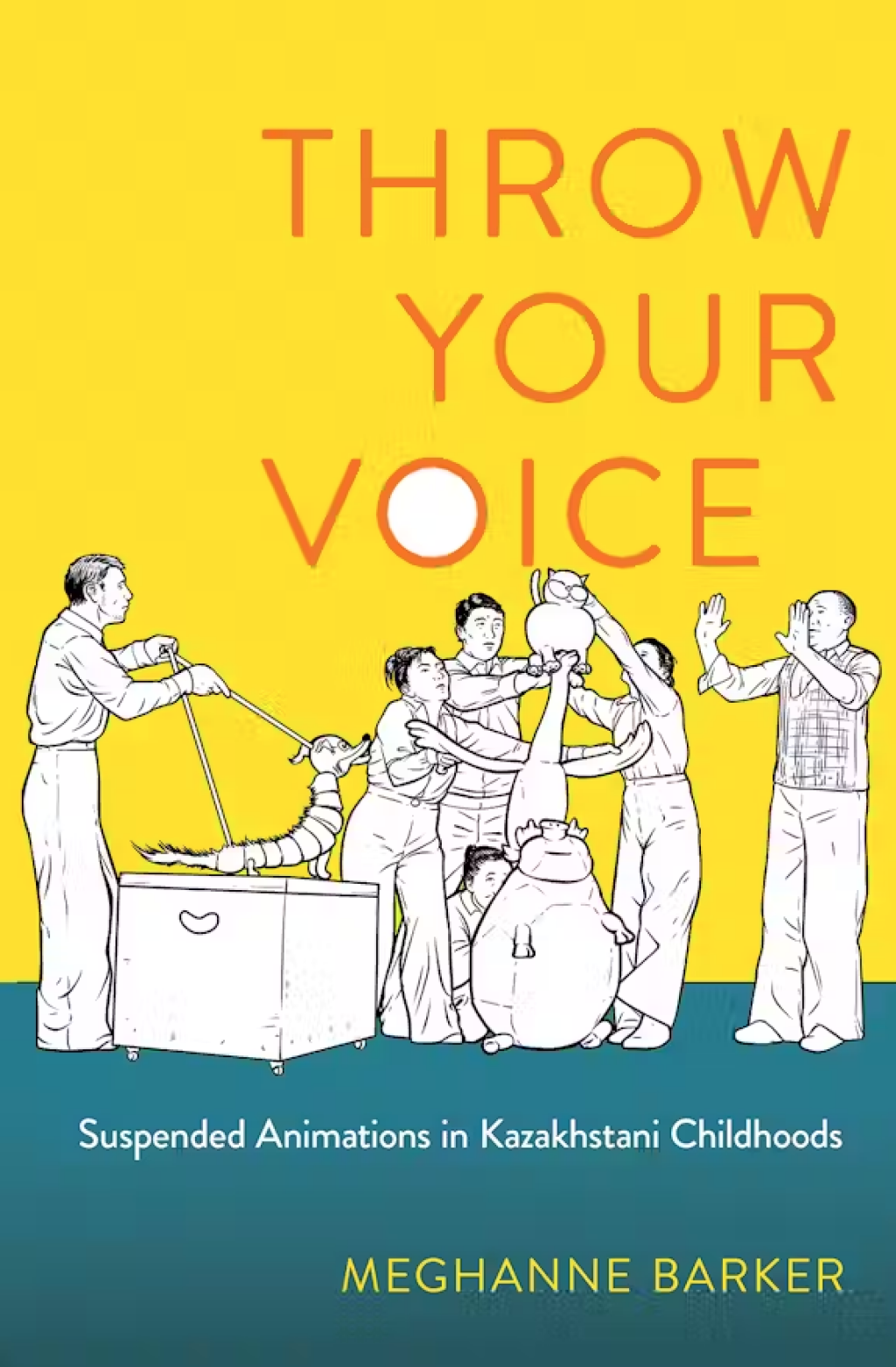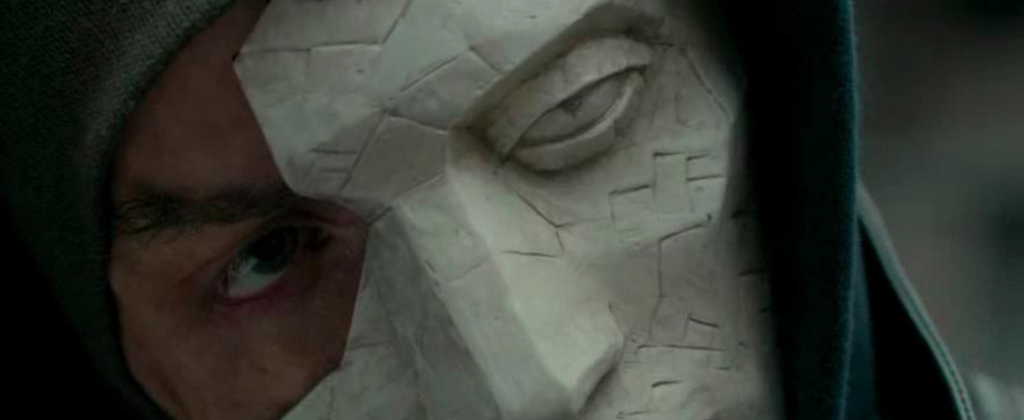Meghanne Barker is a Lecturer in the Department of Education, Practice and Society at University College London. She is the author of Throw Your Voice: Suspended Animations in Kazakhstani Childhoods (Cornell University Press, 2024).
This is Part I in a three-part series. Part II will run tomorrow, 9/25 and Thurday, 9/26.
Throw Your Voice a Northern Illinois University Press book published by Cornell University Press. Copyright (c) 2024 by Cornell University. Used by permission of the publisher.
There was a game the children played, over and over: A mother goat must leave her kids to go to the market. While she is gone, there is a knock at the door, a high voice claiming, “It’s your mother, let me in.” The kids open the door and scream at the sight of a wolf, who growls, grabs a few of them, and leaves. The mother returns. The remaining kids tell her what happened, and she runs off to find the wolf. She frees her children and takes them home.
The children who played the game lived in Hope House, a temporary institution in Almaty, Kazakhstan. Their parents had placed them there with the promise of returning by the time their child was seven years old. The boys took turns as the wolf; the girls rotated as the mother goat. The rest of the children played kids—some captured, some spared. When they played this game outside, the “kidnapped” children marked their captivity by pinning their backs against a tree or a painted tire. This was their state of suspended animation, waiting for their mother to save them.
This book tells a story of vulnerable protagonists, of losses and strangers, and of reunions and returns. At Hope House, teachers made daily life into this narrative, and children acted it out. Thus, when I started watching rehearsals of Kashtanka at the Almaty State Puppet Theater, my second field site, I thought immediately of the children. Kashtanka, the dog at the center of this story, follows a trajectory similar to that of the children of Hope House: she gets lost, enters the house of a stranger, learns to perform, and then goes home again. The story of Kashtanka—originally penned by the Russian writer Anton Chekhov more than a century before the puppet theater adapted it—serves as a narrative thread throughout this book, bringing together disparate sites. I trace parallels between children and puppets, between teachers and puppeteers, between fictional masters and real directors. Different figures tell the same story. Different bodies—child, puppet, doll—animate the figure of the protagonist, with help from others.
Scholars and artists have offered various interpretations of the simple narrative of “Kashtanka,” ranging from the psychoanalytic to the political. The first home, which both Kashtanka and the children have temporarily lost, symbolizes freedom for some and privacy for others. It is a natural state that is also a return to origins. It represents uncertainty and sentimental ties. The second home, with the stranger the protagonist finds there, is even more ambiguous. Sometimes the stranger saves the lost hero; at other times, the outsider causes the displacement—like the wolf who captures the kid goats, or the state that creates orphans through famine, war, or poverty. Can the second home be both cause and remedy for this rupture?
As readers and spectators have used Kashtanka as a symbol for a range of interpretations, different adults made the children of Hope House into symbols who could serve various political projects. The family story that Hope House offered, as a temporary institution, was one of separation and reunion, yet the child’s overall trajectory should be one of steady development. Cute faces and fragile bodies animate narratives of an optimistic future for the nation-state. The cliché that children are the future is expedient in many situations. During Nursultan Nazarbayev’s leadership of Kazakhstan, the figure of the promising child assured the populace that positive growth and change were inevitable as long as citizens remained under the care of their paternalistic leader. Children are useful for constructing positive narratives linked to relationships of dependency because aesthetic tendencies surrounding them emphasize a combination of helplessness and hope. Children rely on adults to survive, and adults need children so that they can imagine continuity and improvement.
In a country that had seen no change in leadership since the dissolution of the Soviet Union, pinning hope onto the bodies of children aided the continual deferral of political change. Nazarbayev had been general secretary of the Communist Party in Kazakhstan just before the Soviet Union collapsed. He led Kazakhstan through its turbulent first years of independence. Friends of mine in Kazakhstan explained to me that Nazarbayev had made a deal with them: he could offer political and economic stability, but in return, democracy would have to wait. When I asked what they thought would happen after Nazarbayev ceased to be in power, they said they were afraid. During my fieldwork, a number of small protests were quickly quashed. The government kept opposition to a minimum, ensuring stability and postponing democracy—a state of suspension.
The children of this book serve as useful signs to various interests, but they are also real and require care. The institutions of childhood I examine in Throw Your Voice and in these posts bring together personal and political stakes of providing care by employing familiarization techniques. Children and adults use these everyday aesthetic devices to solicit sentiment, such as when teachers dress children in costumes that emphasize their cuteness to corporate sponsors.
I focus on two primary familiarization techniques: the creative chronotope and the animation of intimacy. The first consists of people making connections between fantasy and real life. For the second, people bring characters to life, producing and maintaining social relations in the process. Moreover, I identify three acts essential to the animation of intimacy: displacement, destrangement, and projection, discussed below. By participating in imaginings of a positive Kazakhstani future, the children of Hope House gain continued support from government and private sponsors, who sustain this temporary home, where the children wait for their families to return for them. Meanwhile, the children serve as indexical icons of potential for which these benefactors can claim responsibility.





